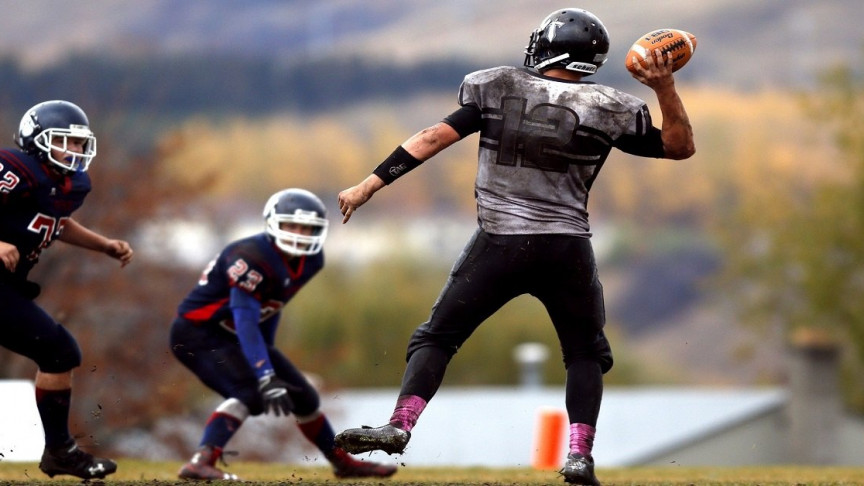These physicists were never amazing football players, but they’ve helped explain some of the magic when a quarterback goes deep.
Written content by Kenneth Chang The New York Times
On Sunday, when Lamar Jackson of the Baltimore Ravens or another strong-armed N.F.L. quarterback launches a deep pass, take a moment to admire the forces of physics he’s unleashed.
When the ball leaves his hand, it points upward, in the direction of the throw. As it arcs through the air, spinning along the long axis without any visible wobble, the nose of the football dips, following the trajectory of the throw and pointing downward when it lands in the hands of the receiver.

To most fans, this looks perfectly natural, the ball slicing efficiently through the air with less drag. To a physicist like Timothy J. Gay, it was befuddling.
That is because what physicists see with their eyes seems to conflict with a fundamental property of motion known as the conservation of angular momentum. It states that the axis of a spinning object, such as the tight spiral of well-thrown football, will not change its orientation unless some force acts to twist it. It was not clear what force could be pushing the football’s nose down.
Worse, the most simplistic analysis would suggest that the onrush of air from below would nudge the nose of the football up, not down, and flip it backward. If that were true, a long beautiful pass would be an impossibility.
“That’s the paradox,” said Dr. Gay, a professor of physics at the University of Nebraska in Lincoln, home of the Cornhuskers. “I worked on it for 20 years, and I didn’t make much progress till I brought in two smart people to help me and, and we spent three years yelling at each other about it.”
Dr. Gay, whose main research is in a field known as polarized electron physics, has had a long interest in football, playing on the team at the California Institute of Technology when he was an undergraduate in the 1970s. Twenty years ago, he made a series of videos explaining basic physics concepts like inertia and momentum, which were shown during halftime at University of Nebraska games.
But the answer to this problem eluded him.
So what is pushing the nose of the football down as it flies through the air?
The two smart people whom Dr. Gay enlisted were Richard H. Price, a physicist at the Massachusetts Institute of Technology who studies Albert Einstein’s theory of general relativity, and C. William C. Moss, who creates high-powered computer simulations at Lawrence Livermore National Laboratory in California.
They, too, were intrigued.
“I played football in New York City a long time ago,” said Dr. Price; he attended Stuyvesant High School, which, like Caltech, is known for its high-achieving academics and not its athletics. “I aspired to be mediocre. Never quite got there.”
Dr. Moss was a classmate and teammate of Dr. Gay’s at Caltech. “I couldn’t play anywhere else,” Dr. Moss said. “The coach gave me a red helmet and told everyone in the team, ‘Don’t kill the kid with the red helmet.’ True story.”
Dr. Price said he had not thought about this problem until he and Dr. Gay met at a scientific conference and talked about it.
“I went on to apply some pretty simple mathematics and do what physicists do,” Dr. Price said. “Which is to try and throw away all of the irrelevant details and get the heart of something. Throw away the bath water, looking very carefully to make sure there are no babies in it.” Read more from The New York Times.
“News Without Politics” keeps you updated on interesting and relevant news stories in the U.S and abroad without media bias.
Stay informed daily on amazing sports news.





